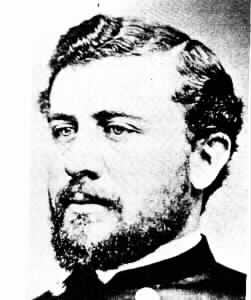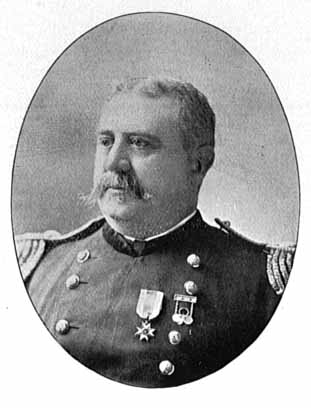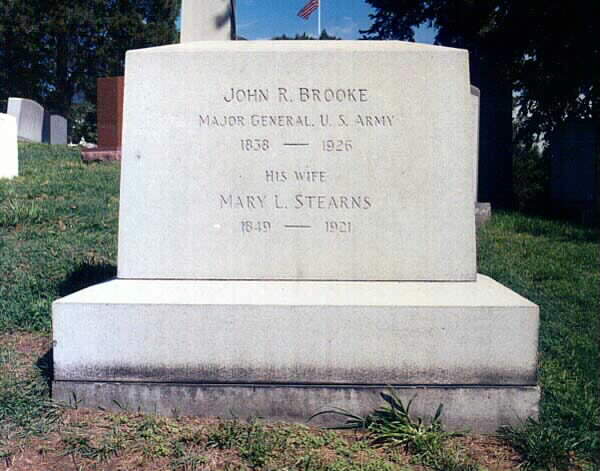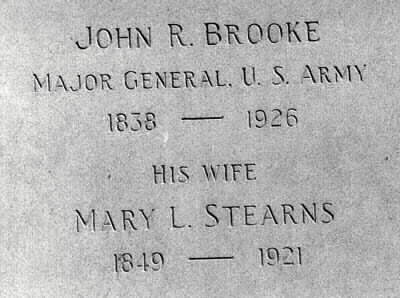Born: July 21 1838, Montgomery County, Pennsylvania.
On April 20, 1861, he entered Federal service as a Captain of the 4th Pennsylvania Infantry. At 1st Manassas, this three month regiment marched away on eve of battle while rest of Union Army was moving in to fight. Becoming Colonel of the 53rd Pennsylvania in November, he took part in the Peninsula Campaign and in temporary command of a Brigade of Sumner’s II Corps at Sharpsburg. He reverted to command of his regiment at Fredericksburg, and was given permanent command of the 4th Brigade, 2nd Division of II Corps, which he directed at Chancellorsville and Gettysburg. On the second day at Gettysburg, the 2nd Division was ordered to support Daniel E. Sickles‘ poorly deployed III Corps, and in desperate fighting around wheatfield was wounded.
He returned to then army and participated in Grant’s Overland Campaign of 1864. For distinguished service at Wilderness and Spotsylvania, his long delayed appointment as Brigadier General was conferred, to rank from May 12, 1864. Critically wounded at Cold Harbor in June, he returned to duty in September, although temporarily incapacitated for field service. He served on court-martial duty until the Spring of 1865, when he was given command of a Division of recruits in Army of Shennandoah under Winfield S. Hancock. He was breveted Major General of Volunteers and appointed to the Regular Army on July 28, 1866, as a Lieutenant Colonel, 37th Infantry; promoted to Colonel in 1879; Brigadier General 1888, Major General in 1897.
During the Spanish-American War he commanded the pestiferous camp at Chickamauga Park, Georgia, where I and III Corps were trained. Shortly thereafter took part in the Puerto Rico Campaign under Nelson A. Miles and was military governor first of Puerto Rico and then of Cuba after evacuation of islands by Spain.
His last command was that of the Department of the East. He retired July 21, 1902, having reached statutory age of 64. His remaining years were spent quietly, mainly in Philadelphia, where he died September 5, 1926. The next to last survivor of the 583 Union generals of full rank.
He is buried in Section 2 of Arlington National Cemetery.
BROOKE, JOHN R
United States Army
VETERAN SERVICE DATES: Unknown
DATE OF DEATH: 09/05/1926
DATE OF INTERMENT: Unknown
BURIED AT: SECTION 2 SITE 1031-WS
ARLINGTON NATIONAL CEMETERY
Born in Pennsylvania in 1838, Major General John Rutter Brooke began his military career in 1861 as a Captain of volunteers in the Civil War and eventually achieved the rank of Major General of volunteers. He retired at war’s end, but later returned to work his way up through the ranks of the regular army. In the Spanish-American War, he commanded the 1st Corps of the Army. In Puerto Rico he landed in Arroyo with General Hains, and reached Guayama by the time the armistice was signed. When General Miles left the island in October of 1898 to return to the U.S., Brooke became military governor and head of the army of occupation in the U.S. military government. On the 6th of December, Brooke was replaced by General Henry, and by the 13th, was named to the same position in Cuba.
Courtesy of James Wright: July 2006
John R. Brooke was one of Pennsylvania’s native sons who rose to the rank of general and gained fame during the Civil War. After the war he remained in the Army as a career and was one of the last surviving Union generals, living well into the 20th century.
John Rutter Brooke was born on July 21, 1838, in Montgomery County. His early education was at Collegeville and at West Chester.
A Civil War embarrassment
Soon after the Civil War commenced he entered federal service on April 20, 1861, as a Captain in a company of the 4th Pennsylvania Infantry Regiment.
Late in July 1861 he suffered the embarrassment of watching his regiment march away just prior to the Battle of 1st Bull Run because its three months enlistment had expired.
In November he became Colonel of the 53rd Pennsylvania Infantry Regiment and participated in the Peninsula Campaign near Richmond, Virginia. Later he temporarily commanded a brigade in General Sumner’s Second Corps at the Battle of Antietam in September 1862.
At the December 1862 Battle of Fredericksburg in Virginia, Brooke again commanded the 53rd Pennsylvania as a colonel. His skill at command earned him a promotion to permanent command of the 4th Brigade of the Second Division of the Second Corps, which he ably led at both Chancellorsville and Gettysburg.
Two serious wounds
Only July 2, 1863, at Gettysburg the Second Division was ordered to support Gen. Daniel Sickles’ Third Corps. In savage fighting in the infamous Wheatfield, Brooke was wounded in the ankle.
His conduct in the fierce fighting earned him a citation from General John C. Caldwell, his division commander. While recovering from his wound he was placed in command of an Army convalescent camp at Harrisburg during the winter of 1863-64.
Brooke returned to the army in 1864 and participated in General U.S. Grant’s overland campaign. For meritorious service at the Wilderness and Spotsylvania, Brooke was at last promoted to the rank of Brigadier General, dating from May 12, 1864.
General Brooke was critically wounded at the Battle of Cold Harbor near Richmond in June 1864 and needed three months to recover. Although he returned to the Army in September he was temporarily incapable of further field service.
Until spring 1865 his time was occupied by serving on court-martial duty but eventually he was given command of a division of recruits under fellow Montgomery Countian General Winfield Scott Hancock in the Shenandoah Valley of Virginia. By war’s end he had been brevetted to the rank of Major General.
Life after the Civil War
Following the war Brooke remained in the regular army and was appointed Lieutenant Colonel of the 37th U.S. Infantry Regiment on July 28, 1866. He was promoted to full Colonel in 1879, Brigadier General in 1888, and major-general in 1897.
During the Spanish-American War of 1898 General Brooke commanded a camp at Chickamauga Park, Georgia, where the Army’s I and III Corps were trained for service. Under General Nelson A. Miles’ command, Gen. Brooke took part in the Puerto Rican campaign. He was later military governor of both Puerto Rico and Cuba after Spain evacuated those islands.
At the age of 64, General Brooke retired from the regular army on July 21, 1902. He spent a quiet retirement living mainly in Philadelphia. He died in that city on September 5, 1926.
At his death he was the next to last survivor of the 583 Union generals of the Civil War. He was laid to rest with honors in Arlington National Cemetery. His wife, Mary L. Stearns (1849-1921), is interred next to him.
BROOKE, JOHN R
Major General, United States Army
- DATE OF DEATH: 09/05/1926
- BURIED AT: SECTION 2 SITE 1031-WS
ARLINGTON NATIONAL CEMETERY
BROOKE, MARY S
- DATE OF DEATH: 10/08/1921
- BURIED AT: SECTION 2 SITE 1031-ES
ARLINGTON NATIONAL CEMETERY
Michael Robert Patterson was born in Arlington and is the son of a former officer of the US Army. So it was no wonder that sooner or later his interests drew him to American history and especially to American military history. Many of his articles can be found on renowned portals like the New York Times, Washingtonpost or Wikipedia.
Reviewed by: Michael Howard




